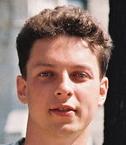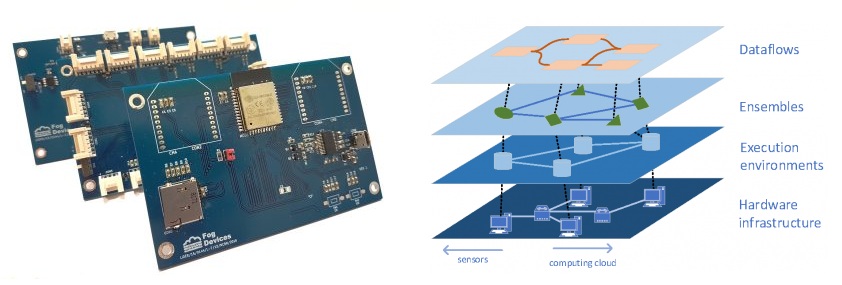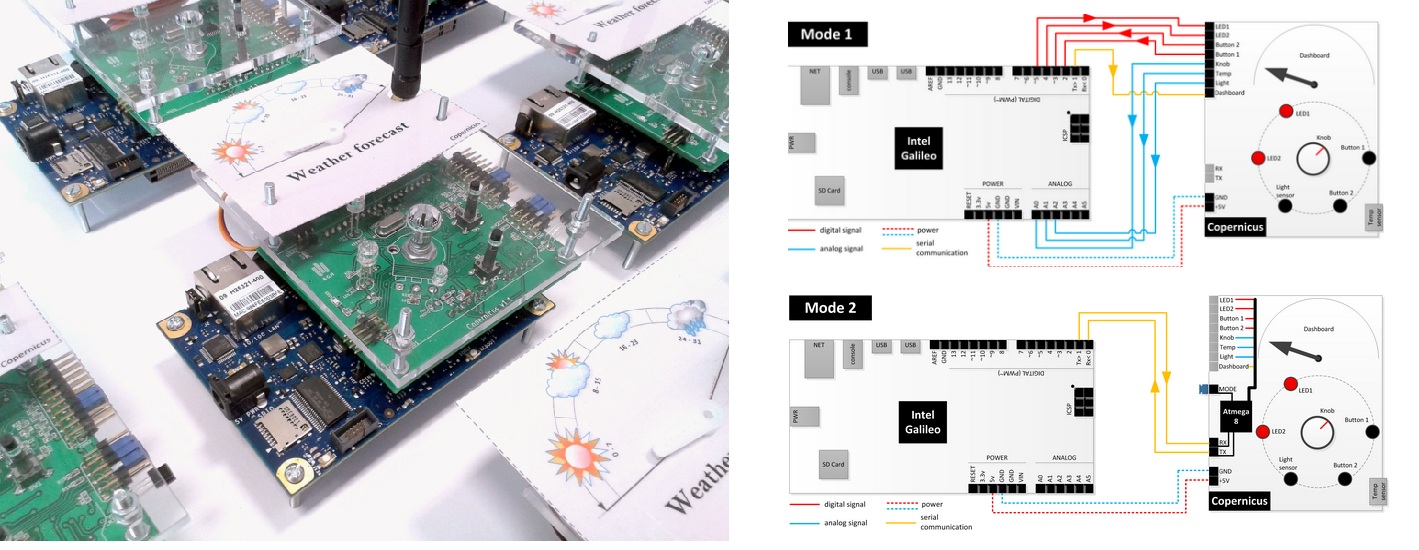Tomasz Szydlo, PhD
 |
|
Short Bio
Since March 2023, I have been a Senior Lecturer in the School of Computing at Newcasle University, UK. I have joined the NUSE group where I am exploring the IoT and TinyML research areas. Up till then, I held the position of associated professor in the Institute of Computer Science which is the part of Faculty of Computer Science, Electronics and Telecommunications at the AGH University of Science and Technology. In 2005 I cooperated with the Machine Learning and Inference Laboratory at George Masson University, lead by prof. Ryszard Michalski, working on the conversion of rules into decision trees. In 2008 I was an intern at IBM Hursley, UK, where I worked on integrating the MQTT protocol with service-oriented device architectures. Since that time, I have participated in several EU and national research projects. In 2010 I defended my PhD at the AGH-UST, which focused on QoS driven semantics-based SOA applications composition and execution. I have obtained a habilitation degree in computer science in 2019 for my work on methods and mechanisms for Internet of Things systems characterized by variable operation policies and restrictions.Research interest
My current research interests cover two intersecting aspects - organization of data processing on cloud-edge-device continuum and computer systems sustainability:
- We live in times when the Internet of Things systems, including smart homes, smart cities, and the fourth industrial revolution based on cyber-physical systems are not unusual. Millions of devices and machines are sources of sensor data streams that require continuous analysis on the fly and later in-depth analysis using big data processing. The 5G technology, edge computing, and computational clouds are enablers for this kind of applications. The research problem is how to organize computation and distribute it on the available infrastructure to provide the desired quality of data processing and how to process the collected data efficiently.
- Unfortunately, the development of computing infrastructure for modern computing systems' needs is not without significance for the environment because it requires a lot of energy and thus has a large carbon footprint. Several solutions, such as energy-efficient processors and architectures, are introduced to reduce energy consumption. The promising approach is to power these devices with renewable energy sources such as photovoltaic panels that absorb solar radiation and generate electricity. Nevertheless, the optimal use of renewable energy sources requires intelligence in resource management. The research problem is how to manage stream processing and data-at-rest in such a way as to take into account the dynamics of changes in renewable energy supplying computing centers both in the cloud and on edge.
I believe that these issues are crucial in the development of computer systems for future generations. In my work, I try to build prototypes of computer systems using new technologies, including virtualization, cloud computing, Internet of Things devices and machine learning, so that it is possible to manage the data processing, and at the same time, operate sustainably.
Research topics: Mobile systems, Computer networks, Internet Of Things, Machine Learning, Sustainable computingResearch projects
-
FogML - set of tools enabling TinyML on microcontrollers as low resource-limited as ARM M0 cores. In contrast to many other frameworks, the FogML utilises classic machine learning methods such as density-based anomaly detection and classifiers based on Bayesian networks, decision forests and vanilla MLP. In addition, it supports off-device learning for the classification problem and on-device learning for anomaly detection.

-
FogDevices - research on the innovative platform for the development of Internet of Things devices based on the Fog Computing concept, NCRD project, Principal Investigator, 2016-2019
The project aims to design and develop a platform for creating IoT devices based on the fog computing paradigm. The platform should enable processing data in the computing cloud and closer to the source – directly on sensor devices, to reduce communication overhead, facilitate local processing, and contextualise operations.
-
ISMOP - IT System of Levee Monitoring, NCRD project, Team Member, 2013-2016
The project involved research in the scope of developing a comprehensive solution for continuous monitoring of the static and dynamic condition of flood embankments, with the ability to simulate ongoing structural changes and the risk of a breach.
-
UniversAAL - an Open Platform and Reference Specification for Building AAL Systems, UE 7FP project, Team Member, 2011-2013
The project involved research in the scope of developing a comprehensive solution for continuous monitoring of the static and dynamic condition of flood embankments, with the ability to simulate ongoing structural changes and the risk of a breach.
-
IT-SOA - new information technologies for the electronic economy and information society based on the SOA paradigm, NCRD project, Team Member, 2009-2012
The project's goal was to research innovative methods and tools enabling the practical application of the Service Oriented Architecture (SOA) paradigm in the process of creating modern IT solutions to improve the competitiveness of enterprises, the development of electronic economy and information society. My responsibility was to design mechanisms which ensure adaptability of SOA service buses in the context of QoS guarantees.
-
TeleCare, mobile and IoT lead, 2011-2012
Tele-monitoring system for the personalized treatment of patients with chronic diseases such as hypertension, diabetes or glaucoma and was also used to monitor patients after hospitalizations. Patients used mobile devices and a set of communication-enabled medical devices selected to match patients' profiles and lifestyles. Apart from ordinary medical devices such as blood pressure monitors and digital weight scales, the system can be extended by custom-designed equipment e.g. pillbox that tracks taken medications.
-
AmbientNetworks - Mobile and Wireless Systems and Platforms Beyond 3G, UE IST 6FP project, Team Member, 2006-2007
The project's goal was to develop overlay networks capable of adapting to heterogeneous radio communication technologies and service platforms. The main focus was on developing suitable interfaces and handshaking mechanisms for various network providers.
-
Copernicus - custom designed tool for IoT classes allowing for several scenario driven classes focused on the software side of IoT.

- I have also been involved in research collaboration with IT companies such as Samsung, IBM, and Asseco.